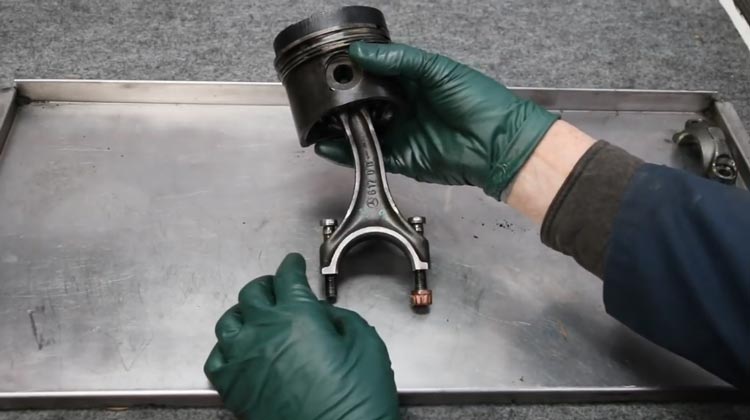If you’re driving and your car makes a loud knocking noise, it’s time to pull over. The chances are good that you have a bent connecting rod. This can be a costly repair, so it’s important to know the symptoms of a bent connecting rod and what to do if you think your car might have one. In this discussion, I will discuss the symptoms of a bent connecting rod and replacement costs.
Connecting Rod:
The connecting rod is responsible for connecting the piston to the crankshaft. It is a critical part of the engine and when it fails, it can cause serious damage. Connecting rods join each piston to the crankshaft in an internal combustion engine. As the crankshaft turns, the pistons move back and forth rapidly, which causes immense tensile forces on the connecting rods.
The connecting rods in an engine have bearings that go between the rod and the crankshaft. These bearings lower friction by being lubricated and they prevent damage by stopping metal-on-metal contact as the crankshaft rotates. The piston is connected to the top of the connecting rod by a pin called a wrist pin, piston pin, or gudgeon pin.
Symptoms of a Bent Connecting Rod: Detailed Discussion
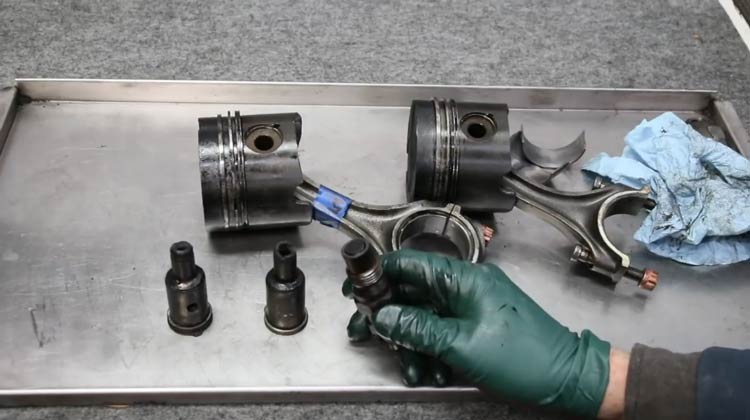
A connecting rod in an engine needs to be able to withstand extreme conditions or else the engine will break down. If the rod can’t handle being under a lot of pressure, then it may snap from all the weight put on it during combustion. If this happened, the engine would cease to function properly because there would no longer be any intake strokes, exhaust strokes, compression strokes, or power strokes.
The driver will be able to notice when this occurs because there are some very noticeable symptoms present. Here are some of the most common symptoms indicating connecting rod failure. Let’s discuss the common symptoms in detail:
Lower Engine Compression:
One of the first symptoms of a bent connecting rod is lower engine compression. If the connecting rod is bent, it will no longer be able to connect the piston to the crankshaft properly. This will cause a decrease in compression, which will lead to a decrease in power and performance.
Although a slightly bent connecting rod may not cause too big of an issue, the cylinder with the bent rod will likely have lower compression. If you fear your rods may be bent, get a compression test. If the numbers across all cylinders are relatively close to each other (within 10%), then your rods are likely unharmed.
Please be aware that there are a few reasons why you might have low compression results. If your test is unsuccessful, think about doing a leak-down test so you can pinpoint the problem.
Loss of Engine Power:
Another symptom of a bent connecting rod is a loss of engine power. If the connecting rod is bent, it will no longer be able to connect the piston to the crankshaft properly. This will cause a decrease in power and performance.
If you’re driving and you suddenly lose power, you may have a bent connecting rod. Pull over to the side of the road and call a tow truck. It’s not safe to drive with a bent connecting rod.
Knocking Noise:
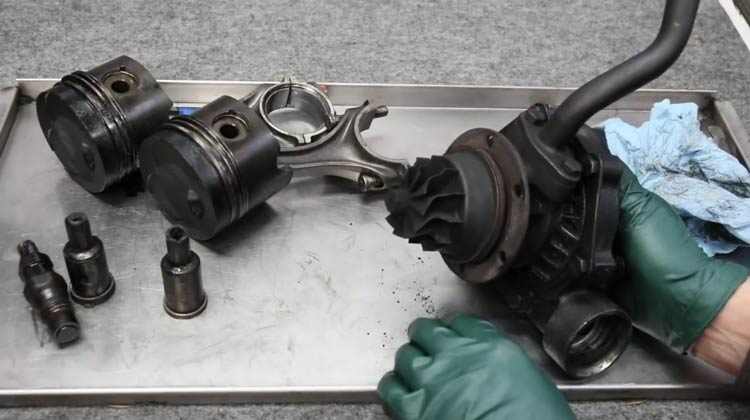
One of the most obvious symptoms of a bent connecting rod is a knocking noise. If the connecting rod is bent, it will no longer be able to connect the piston to the crankshaft properly. This will cause the engine to make a knocking noise.
If you hear a knocking noise coming from your engine while it’s running, don’t shrug it off- this could be an indication of connecting rod trouble, which is extremely serious. The more the engine load increases, the faster the noise will get.
The noise will eventually go away when the oil has had a chance to circulate. This gives the engine more lubrication, which is only temporary. If the connecting rod or bearing is causing the problem, then the noise will come back the next time you start up your engine.
Engine Vibration:
Another symptom of a bent connecting rod is engine vibration. If the connecting rod is bent, it will no longer be able to connect the piston to the crankshaft properly. This will cause the engine to vibrate.
If you feel your engine start to vibrate while you’re driving, it’s not a good sign. This could be an indication that one of your connecting rods is bent. The faster you’re going, the more pronounced the vibration will be.
If you can, pull over to the side of the road and turn off your engine. Once the engine has cooled down, check under the hood to see if anything looks out of place. If you see a bent connecting rod, don’t try to fix it yourself- call a tow truck and have your car taken to a mechanic.
Engine Seized:
One of the most serious symptoms of a bent connecting rod is an engine seizure. If the connecting rod is bent, it will no longer be able to connect the piston to the crankshaft properly. This will cause the engine to seize.
If your engine seizes, it’s likely because a thrown rod has prevented the crank from moving. You can tell if this is the case if you cannot turn the engine over by hand when using a wrench on the crankshaft pulley bolt. Usually, you should be able to do this even if the engine isn’t starting.
Your car engine seizes while you’re driving, it’s extremely dangerous. You could lose control of your car, and you could cause an accident. If your engine seizes, pull over to the side of the road and turn off your engine. Then call a tow truck to take your car to a mechanic.
When a connecting rod is thrown, it will produce a loud banging noise or metal flying out of the engine. This can result in a hole in the engine block and oil spilling everywhere underneath the vehicle.
The Causes of Connecting Rod Bent:
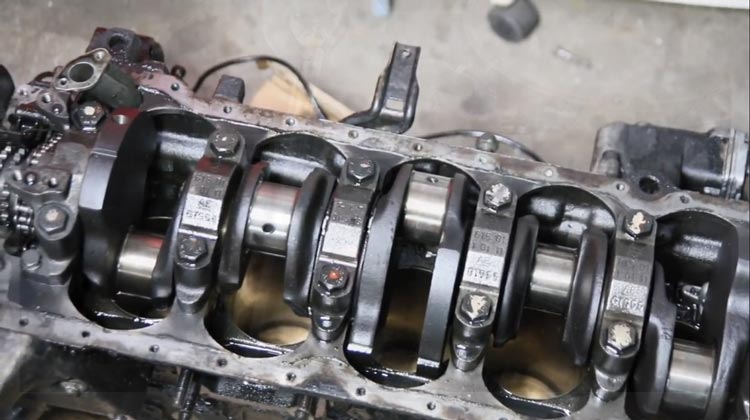
There are many different reasons why a connecting rod might bend.
Wear And Tear:
One of the most common causes of a bent connecting rod is wear and tear. Over time, the connecting rod will start to wear down. This can be caused by several factors, including:
-The quality of the metal used in the connecting rod
-The amount of oil that is circulating through the engine
-The amount of heat that the engine is generating
-The amount of stress that the engine is under
If the connecting rod isn’t made out of high-quality metal, it’s more likely to bend over time. And if the engine isn’t getting enough oil, it will start to wear down faster. The same is true for heat and stress.
Accidents:
Another common cause of a bent connecting rod is an accident. If your car is in a collision, the connecting rod can be bent. This is more likely to happen if the collision is severe.
If you’re involved in a car accident, it’s important to get your car checked out by a mechanic. Even if the accident doesn’t seem severe, it’s possible that something like a bent connecting rod could be causing problems.
Manufacturing Defects:
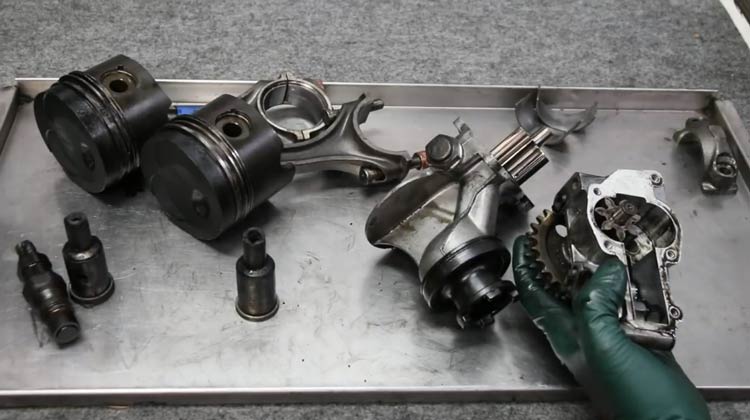
Another cause of a bent connecting rod is a manufacturing defect. If the connecting rod isn’t made properly, it’s more likely to bend over time. This is why it’s important to buy a car from a reputable manufacturer.
If you think that your connecting rod might be bent, it’s important to get it checked out by a mechanic. They’ll be able to tell you for sure whether or not the rod is bent and needs to be replaced.
Flooded Engine:
A bent connecting rod can also be caused by a flooded engine. If your engine gets flooded, it’s possible for the connecting rod to become bent. This usually happens because the water pressure is too high.
Liquids are not compressible, unlike air. If the engine is hydro-locked (filled with Fluid instead of just air), you run the risk of bending the connecting rods when you go to start your vehicle. Before being able to start normally, you will have to de-flood the engine.
If your engine gets flooded, it’s important to get it checked out by a mechanic as soon as possible. They’ll be able to tell you whether or not the connecting rod is bent and needs to be replaced.
Pre-ignition:
Pre-ignition and detonation are terms for abnormal combustion of the air-fuel mixture inside the combustion chamber. A variety of reasons may cause fuel to combust prematurely: carbon buildup, ignition timing that’s too advanced, or running fuel with too low of an octane rating for the vehicle.
If an engine experiences a large pre-ignition or detonation event, it could cause the cylinder pressures to exceed the designed limits, potentially leading to engine failure.
Weak Engine Management:
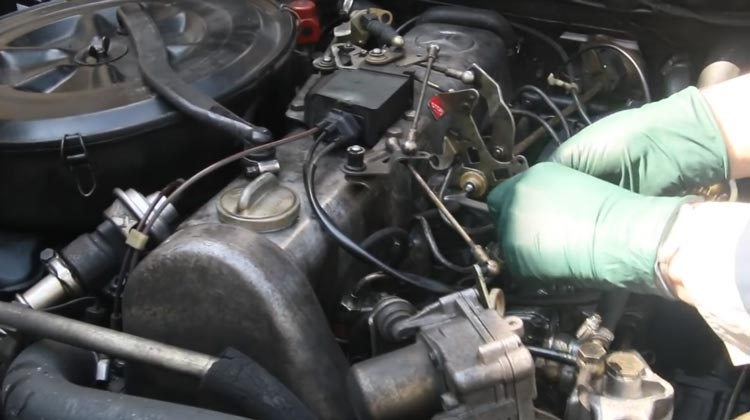
If you’re using aftermarket engine parts, chances are your ECU was programmed by a tuner. If this tune is too aggressive for your running conditions or you push your engine too far, you could end up throwing a rod.
When you install new parts on your vehicles, like an intake or exhaust, it’s important to tune the engine to match. If you don’t, and something expensive breaks as a result of driving too hard, it could be very costly to fix.
Needlessly Revving The Engine:
If you want your engine to last, avoid revving it higher than necessary. When you do rev it, the pistons are forced to move faster which puts more strain on the connecting rods. If you exceed what the engine was designed for though, you’ll likely have to get a new one altogether.
You can over-rev your engine on a manual transmission more easily than with an automatic one. Most engines, however, have a redline that will cut fuel and prevent you from going too high.
If you downshift to a gear that’s too low for the speed you’re traveling, your engine won’t be able to keep up and will overwork itself. This is known as a “money shift” because this type of mis-shift ends up costing a lot of money to fix.
Replacement Cost of Connecting Rods:
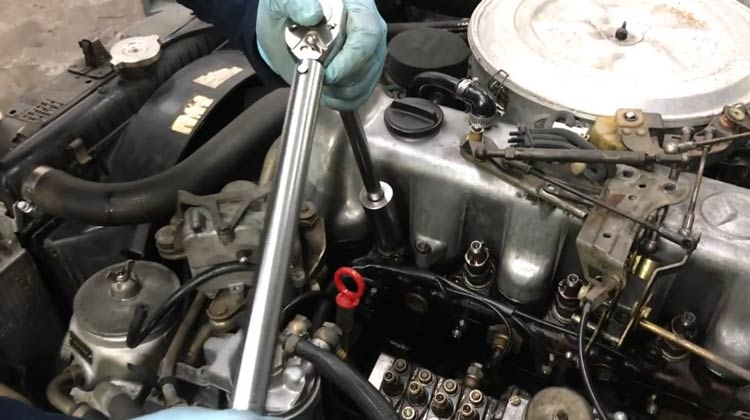
The cost to replace a bent connecting rod will be at least $3,000. If the engine has a thrown connecting rod, then it will most likely need to be replaced entirely which can sometimes reach upwards of $5,000 for luxury and larger car models.
If your connecting rod is bent, it’s important to get it checked out by a mechanic as soon as possible. They’ll be able to tell you whether or not the rod is bent and needs to be replaced.
The sooner you catch a problem like this, the less expensive it will be to fix. If you wait too long, you could end up damaging other parts of the engine and the repairs will be much more costly. It’s important to keep up with the maintenance on your vehicle, so you can avoid problems like this altogether.
The Function of Connecting Rod:
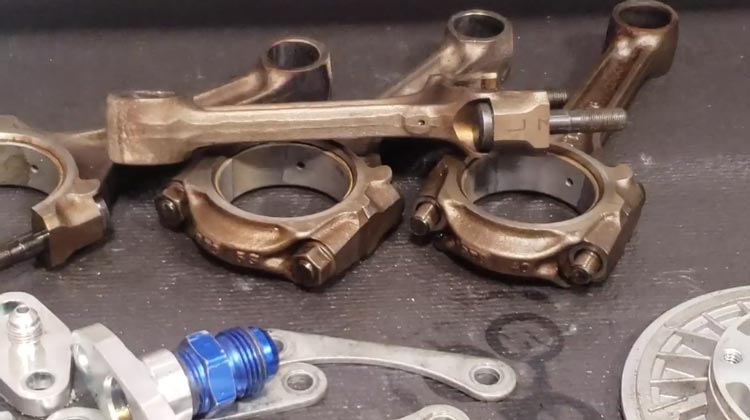
The connecting rod’s job is to link the crankshaft and piston together so that power can be transmitted. In other words, these rods transform linear up-and-down motion from the pistons into the circular movement of a car’s crankshaft.
The connecting rod contains bearings that sitting middle of the crankshaft and the rod. These bearings prevent metal-on-metal contact as well as proper lubrication while the crankshaft rotates. In addition, the top of the connecting rod is secured to the piston with a pin. This type of pin is commonly known as a gudgeon pin, piston pin, or wrist pin.
Connecting rods are under a lot of strain, which makes them more susceptible to weakening. If it becomes too weak, it won’t be able to handle the pressure from combustion and could break or bend. This would cause engine failure because the damaged connecting rod causes interruptions with the power strokes, compression strokes, exhaust strokes, and intake strokes.
Watch the video below, if you still have any confusion:
FAQs:
Q: Does a bent connecting rod mean the engine is damaged?
A: Yes, a bent connecting rod means that the engine is damaged. The connecting rod is responsible for linking the crankshaft and piston together, so if it’s bent, it will cause interruptions with the power strokes, compression strokes, exhaust strokes, and intake strokes. This will eventually lead to engine failure.
Q: Can a bent connecting rod be repaired?
A: In most cases, a bent connecting rod will need to be replaced. The cost of replacing a bent connecting rod will be at least $3,000. If the engine has a thrown connecting rod, then it will most likely need to be replaced entirely which can sometimes reach upwards of $5,000 for luxury and larger car models.
Q: How can I prevent my connecting rod from becoming bent?
A: You can prevent your connecting rod from becoming bent by avoiding revving the engine higher than necessary. When you do rev it, the pistons are forced to move faster which puts more strain on the connecting rods. If you drive a manual transmission, be careful not to downshift to a gear that’s too low for the speed you’re traveling. This will cause the engine to overwork itself. Lastly, make sure to keep up with the maintenance on your vehicle so that you can avoid problems like this altogether.
Q: Can I replace a bent connecting rod myself?
A: No, you should not try to replace a bent connecting rod yourself. This is a job that should be left to a qualified mechanic because it’s a complex repair. Trying to do it yourself could end up costing you more in the long run if you damage other parts of the engine in the process.
Q: Does a bent connecting rod cause engine failure?
A: Yes, a bent connecting rod can cause engine failure because it interrupts the power strokes, compression strokes, exhaust strokes, and intake strokes. This will eventually lead to engine failure.
Conclusion:
A bent connecting rod is a serious problem that can cause engine failure. If you think your connecting rod may be bent, it’s important to take your vehicle to a qualified mechanic so they can properly diagnose and fix the problem. Trying to fix it yourself could end up costing you more in the long run if you damage other parts of the engine in the process. The cost of replacing a bent connecting rod will be at least $3,000, but if the engine has a thrown connecting rod, then it will most likely need to be replaced entirely which can sometimes reach upwards of $5,000 for luxury and larger car models. To avoid this problem altogether, make sure to keep up with the maintenance on your vehicle and avoid revving the engine higher than necessary.
I hope that this discussion has helped you understand the symptoms of a bent connecting rod and the replacement cost. If you have any further questions, feel free to reach out to us.
